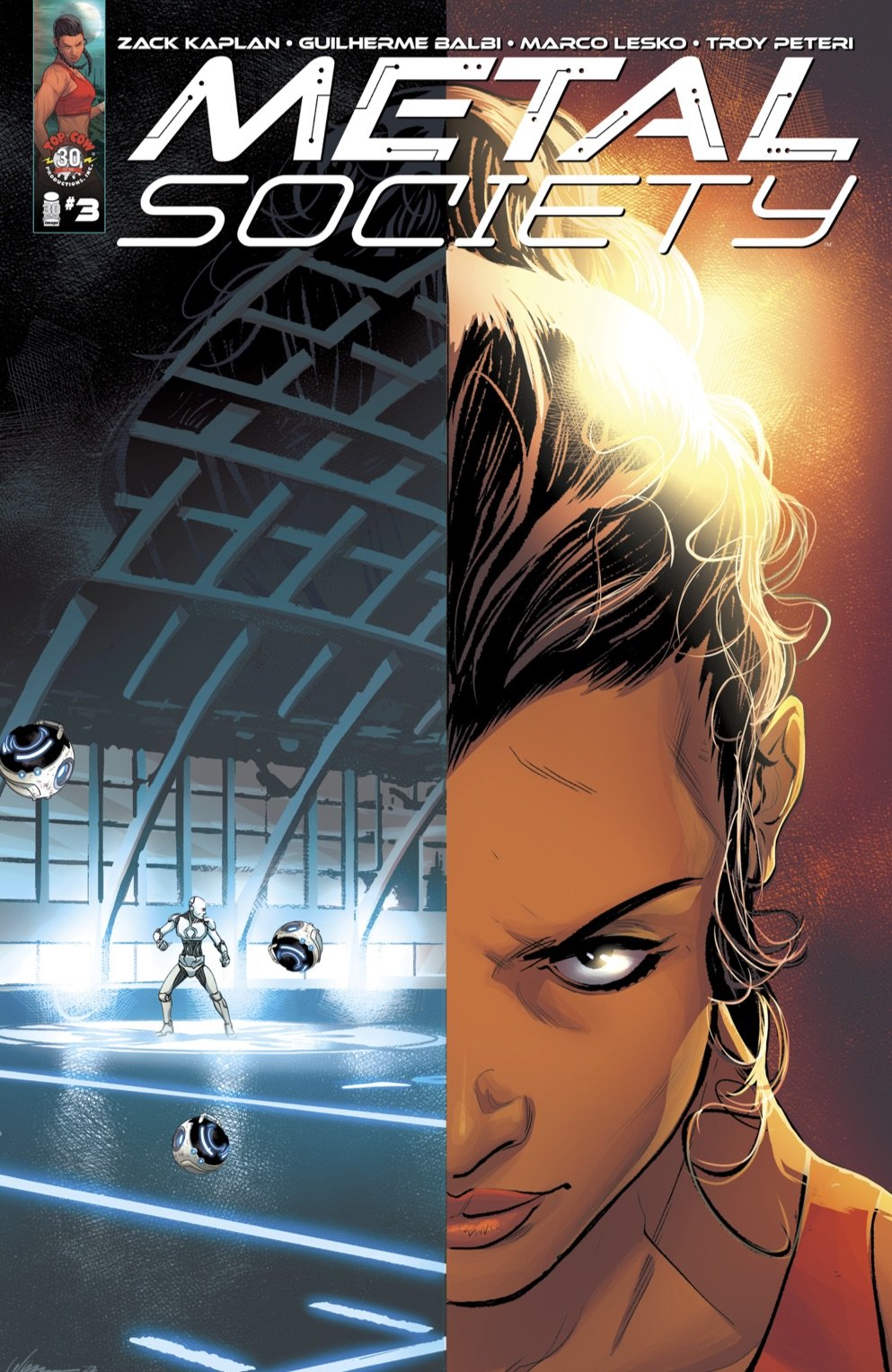Metal Society #3 // Review
It’s not a fight to the death, but y’know...if it happens, it happens. One of the combatants is a robot. The other is human. There’s a 35% chance of the human dying. She’s fighting for a hell of a lot, though, as Metal Society reaches its third issue. The dystopian sci-fi drama begins to make its final approach to some sort of conclusion by writer Zack Kaplan, artist Guilherme Balbi, and colorist Marco Lesko. The definition between robot and human seems a bit muddled in another largely entertainingly dramatic chapter. It’s a strange journey that uses its genre as background when it could be far more integrated with the plot, but it remains largely enjoyable.
It’s not an easy thing to accept a challenge that could kill. Rosa is fighting for a lot more than just herself. She’s fighting for the respect of her people from the dominant culture. The high profile of the combat between her and the robot representative has elevated things. The unit in question is being trained by a combat unit that had retired without ever beening defeated by another robot. A simple combat between one human and one robot in a ring is suddenly something everyone is watching, and there’s no telling how things will turn out in the end.
Kaplan’s script really seems to show the similarity between human intelligence and AI in a way that undercuts any significance of the sci-fi angle on the story. There isn’t a whole lot specific to the world of Metal Society driving the story. A quick twinge of a question involving the inherent violence of humans makes an interesting little flash halfway into the issue. What does it mean that humans must prove prejudices about their violence to gain respect from those bigoted robots? It’s an interesting paradox that gets completely swept away in the surface-level silliness of prep for the match, which isn’t nearly as intriguing.
Balbi solidly ratchets up the tension as both robot and Rosa prep for the inevitable fight. The stern look of determination on the face of the robot is mirrored in the brave intensity of Rosa’s poise. The series could be served better by a stronger definition between the worlds of humans and robots. Human AI. It’s all more or less the same between the two social classes in script AND visuals. There isn’t a great deal of contrast between the world of human and android. Balbi covers the atmosphere of both combatants in shadows that are given murky life in Lesko’s muted earth tones.
Kaplan and company are developing a fun drama. It may not live up to the potential of a solid conflict between human and robot, but there’s more than enough in the murky grittiness of the drama to keep everything moving from beginning to end. The robot end of things still feels like a weird echo of humanity without enough to separate it from the humans that are being oppressed, but that might work when things resolve in the final issue if Kaplan and company can make the similarities between the two groups compelling enough by the final panel.










